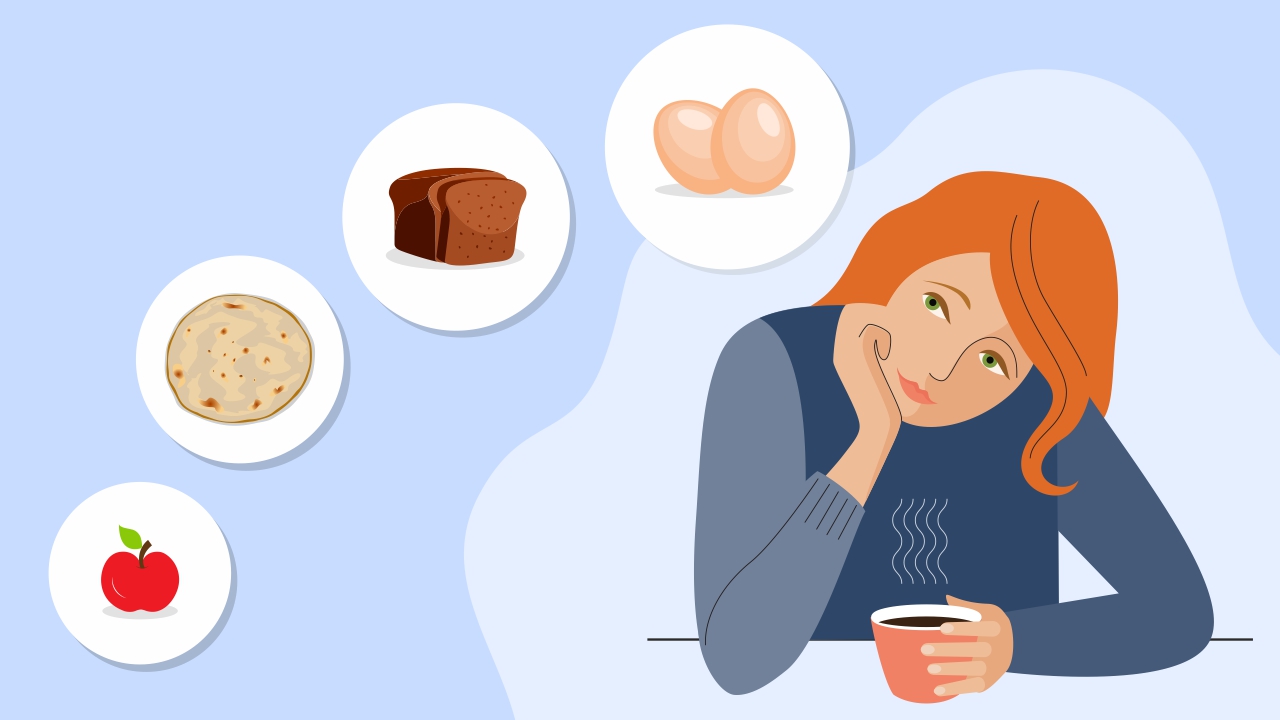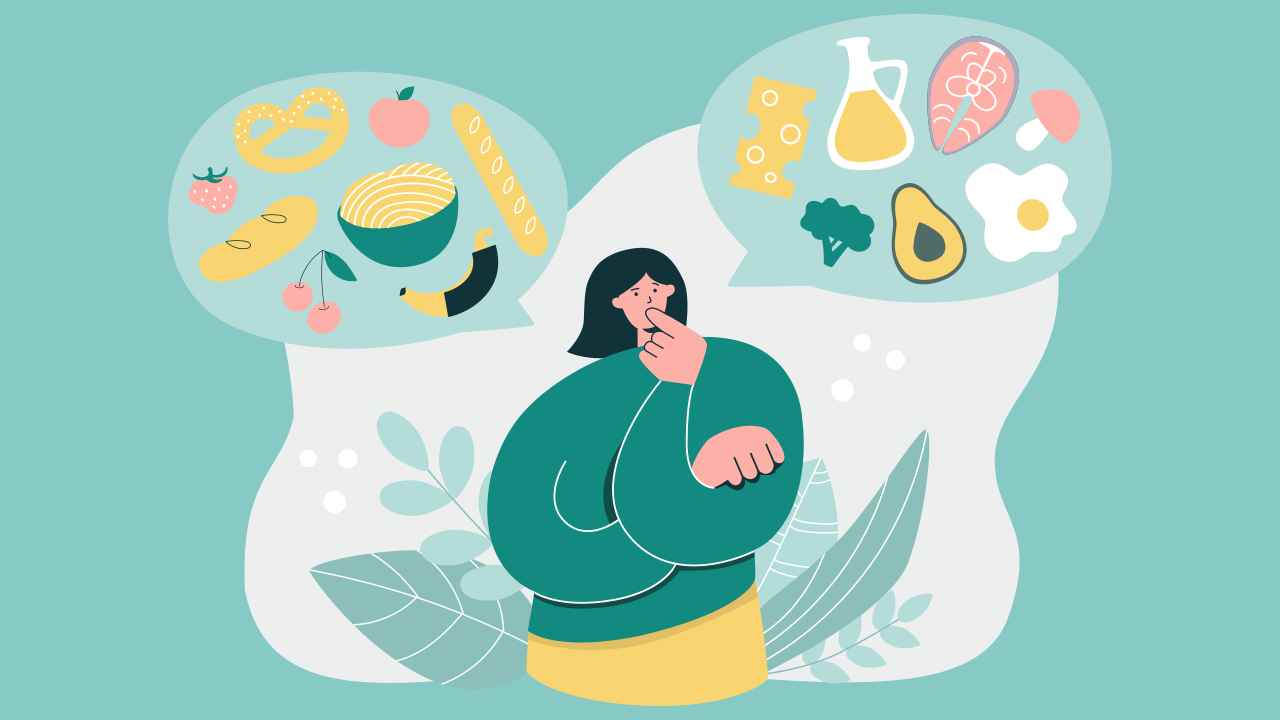
Let’s Bust Some Common Nutrition Myths

Once you have made up your mind to eat better, whether it is to lose weight or improve your overall health, the next step would be to research healthier diets, guides, and tips. And this is where things get challenging. There’s a plethora of information — and misinformation — out there when it comes to diet and nutrition. There are plenty of misconceptions too, from the merits of organic foods to the promising benefits of going gluten-free. Even sources that may seem reliable might be perpetuating nutrition myths, making it difficult for you to differentiate between fact and fiction.
But knowledge of nutrition myths and facts is imperative if you want to zero in on a healthy diet. So, let’s bust a few common dietary myths to see what science actually says about them.
1. Organic food is good
The use of inorganic fertilizers, pesticides, and synthetic additives is minimal in organically grown foods or raised livestock. So, the retention and bioavailability of nutrients are indeed better in organic foods as compared to those produced using conventional methods.
However, you need to be wary of processed organic foods such as canned products or ready-to-eat meals that may include certain organic ingredients and conform to the required standards, but are likely to be stripped off nutrients due to the processing involved. While buying organic foods, it is important to check the certification seal and understand the difference between the claims of ‘100% organic’, ‘made with organic ingredients’, and ‘natural and free from additives’.
The term ‘100% organic’ is used for food products that are made with only organic ingredients and processed using organic methods. Usually, products that are labeled ‘made with organic ingredients’ indicate that they contain 70%-95% organic ingredients. The term ‘natural and free from additives’ may mean that no artificial or synthetic ingredient has been used to prepare the product or added to it. Ideally, 100% organic food would be the preferred choice. However, not all products tick this box. You can then choose the ones made with organic ingredients or go for natural additive-free food products.
2. All ‘low-fat’ foods are healthy
Remember not all fats are bad. Fats can be broadly classified into saturated and unsaturated fats. Unsaturated fats are considered to be healthier than saturated fats as they lower the risk of heart disease by aiding in the reduction of blood cholesterol levels, and should be a part of your daily caloric intake. The Institute of Medicine (IOM) recommends that adults should get 20%-35% of their daily calories from fat. It is suggested that 5%-10% of total calories can come from saturated fats and 15%-20% from unsaturated fats. Your body requires fats to keep your heart pumping, make your joints supple, and improve your skin’s texture.
Before you decide to go all out on ‘low-fat’ packaged foods, ensure that you have read the nutrition facts carefully and checked the total fat, sodium, calorie, and fiber content. Though lower in fat than the same-size portion of the full-fat products, low-fat alternatives may contain added sugar, refined flour, or starch thickeners, and other unhealthy ingredients to improve flavor and texture, which can increase its caloric value and prove to be unhealthy.
3. Ghee helps to lose weight
There isn’t any single food that can help achieve the elusive weight loss. Regular consumption of ghee or clarified butter is thought to be an effective weight-loss strategy. This is mainly owing to the presence of antioxidants and short-chain fatty acids in ghee that can render several health benefits such as the ability to fight inflammation and improve absorption of fat-soluble vitamins (A, D, E and K). Nutritionally, ghee is almost 100% fat and contains a combination of saturated and unsaturated fatty acids. It is also a dense source of energy. But be mindful and avoid excess ghee in your diet as this can deter your weight loss effort. That said, you can reap the benefits of ghee when consumed in moderation (1-2 teaspoons a day) as part of a healthy diet.
4. Become vegetarian to be healthier
Choosing a vegetarian eating plan that is high in fiber and micronutrients and low in calories and saturated fat content is a healthy strategy to build immunity and achieve weight loss. But vegetarians — like non-vegetarians — can make unhealthy food choices such as high-fat, high-calorie foods or foods with little or no nutritional value that may contribute to weight gain. So, what you consume is as important as what you eliminate from a diet plan to determine the plan’s nutritional value.
Furthermore, proteins derived from plant-based sources are often considered to be of lower quality. This is because most plant-based foods lack one or more building blocks of protein (amino acids) that are essential for health, making these an incomplete protein source. Regardless of your food preferences, the key to a balanced diet is to include adequate proportions of healthy sources of macro as well as micronutrients.
5. All sugars are bad for you
There has been endless debate around sugar. If you eat too little, you are devoid of the much-needed energy boost, especially during your workouts. Conversely, if you end up eating too much, you gain weight. So, it all zeroes down to figuring out what kinds of sugar to eat and when.
Also read: Do You Need to Quit Sugar to Lose Weight?
Remember all sugars are carbohydrates. Grains (cereals), fruits, vegetables, pulses, sweets, and processed foods like breads, cookies, biscuits, and colas are all sources of carbohydrates. So, is all sugar bad? No, but we need to be able to differentiate between good and bad sources and the amount of sugar consumption.
What separates good from bad sugar is the amount of processing and the time taken by your body to break it down and provide energy. The more processed a product, the more deprived it would be of its nutritional properties. The lesser time it takes for the carbohydrate to break down, the quicker will be the rise in your blood glucose levels. Regular, rapid spikes in your blood sugar levels, in the long run, can impair your body’s ability to lower blood sugar effectively, increasing your risk for developing type-2 diabetes.
The strategy is to restrict the intake of refined carbohydrates such as biscuits, pizza, and white breads and include enough fresh fruits, vegetables, and whole grains in your daily diet. These good sources include a number of other micronutrients and fiber, which allows slow digestion.
6. Protein is only for gym goers
Proteins are essential for optimum growth, development, and repair of muscle tissue. It is also an important component for several biochemical reactions and immune function in the body. Everyone, including children, seniors, not-so-active adults, pregnant women, sportspersons, and gym-goers should include adequate amounts of protein in their daily diets. A way to calculate your daily protein requirement is to ensure that you consume 1g-1.5g of protein per kg of your body weight. So, if you weigh 60kg, your minimum protein consumption should be 60g per day. A good way to step up the protein content of your diet is by including a bowl of cooked beans (60g) with your meals, tossing a tablespoon (15g) of sesame or flax seeds in your smoothies or salads, and having a handful of nuts (10g) as snacks.
Also watch: Why Should You Eat Protein for Weight Loss?
7. Switch to egg whites from whole eggs
Since egg yolks are high in cholesterol, and a diet high in cholesterol can contribute to elevated blood cholesterol levels, we ideally should be avoiding egg yolks. Right? Wrong, because researchers point out that it is the amount of saturated fats that are present in red meats and organ meats, and trans fats that are there in processed foods and snacks that have a greater impact in raising blood cholesterol levels compared to dietary cholesterol. A large egg contains only a moderate amount of fat, with about 5g in the egg yolk (1.5 g saturated), 213mg of cholesterol, and 75 calories. A whole egg can easily fit into the daily fat limit of a healthy individual who is otherwise following a balanced and nutritious diet. But if you have a history of heart disease, it is better to switch to egg whites and have whole eggs only once or twice a week.
8. Brown bread is healthier
Whole wheat bread, multigrain bread, and bran bread are higher in fiber, B-complex vitamins, minerals such as magnesium, zinc, and iron, and enjoy a nutritional advantage over white bread. On the contrary, brown bread is typically prepared from a combination of refined and whole-grain flours, or worse can be a brown-colored imposter of whole wheat bread containing caramelized brown sugar, synthetic additives, and colorants. Look for labels that clearly state ‘100% whole grain’ and list whole wheat or whole grains as the first in the list of ingredients.
9. Go gluten-free
A complete gluten-free diet may be necessary for people having wheat intolerance or Celiac disease. However, for others, this popular food trend is a legitimate pretext to avoid gluten-containing processed and oily foods, which tend to be high in empty calories, ie, calories without any nutritional value, and increased consumption of these items can lead to weight gain. Additionally, it can raise the risk of health problems like obesity, type-2 diabetes, and cardiovascular conditions. Instead, include nutritionally sound gluten-free carbohydrates such as brown rice, starchy vegetables, fresh fruits, and nuts.
10. Roti is better than rice
When prepared using whole wheat, millets such as jowar and bajra, or a combination of whole grains, roti provides a higher amount of protein, fiber, B vitamins, magnesium, and potassium as compared to rice. But does that make roti superior to rice?
Good health is all about variety and moderation. So, rice can also be eaten as part of a healthy diet as long as you pay attention to the quantity of rice and calorie intake. If the number of rotis or amount of rice you consume is similar in the number of calories, you can include either in your diet.
Here is a comparison of the nutrition value of 1 medium roti made of 30g flour and no additional ingredients and 30g of raw rice, ie, 1/2 serving (75g) of cooked rice.
| Food item | Energy (kcal) | Carbohydrate (g) | Protein (g) | Total Fat (g) | Total dietary fiber (g) | Calcium (mg) | Iron (mg) | Magnesium (mg) |
| Roti | 96.078 | 19.251 | 3.171 | 0.459 | 3.408 | 9.282 | 1.23 | 37.5 |
| Rice | 106.905 | 23.472 | 2.382 | 0.156 | 0.843 | 2.247 | 0.195 | 5.79 |
If you prefer rice, go for brown and red rice instead of white rice as they have more micronutrients per calorie. No food is off-limits if you plan well, stay active, and set realistic health goals.
Lastly, whether you are a nutrition research geek or a skeptical health enthusiast, always let legitimate science, experience of qualified health professionals, and your common sense dictate your dietary choices instead of celebrity endorsements or popular trends. Remember, balance is key.














